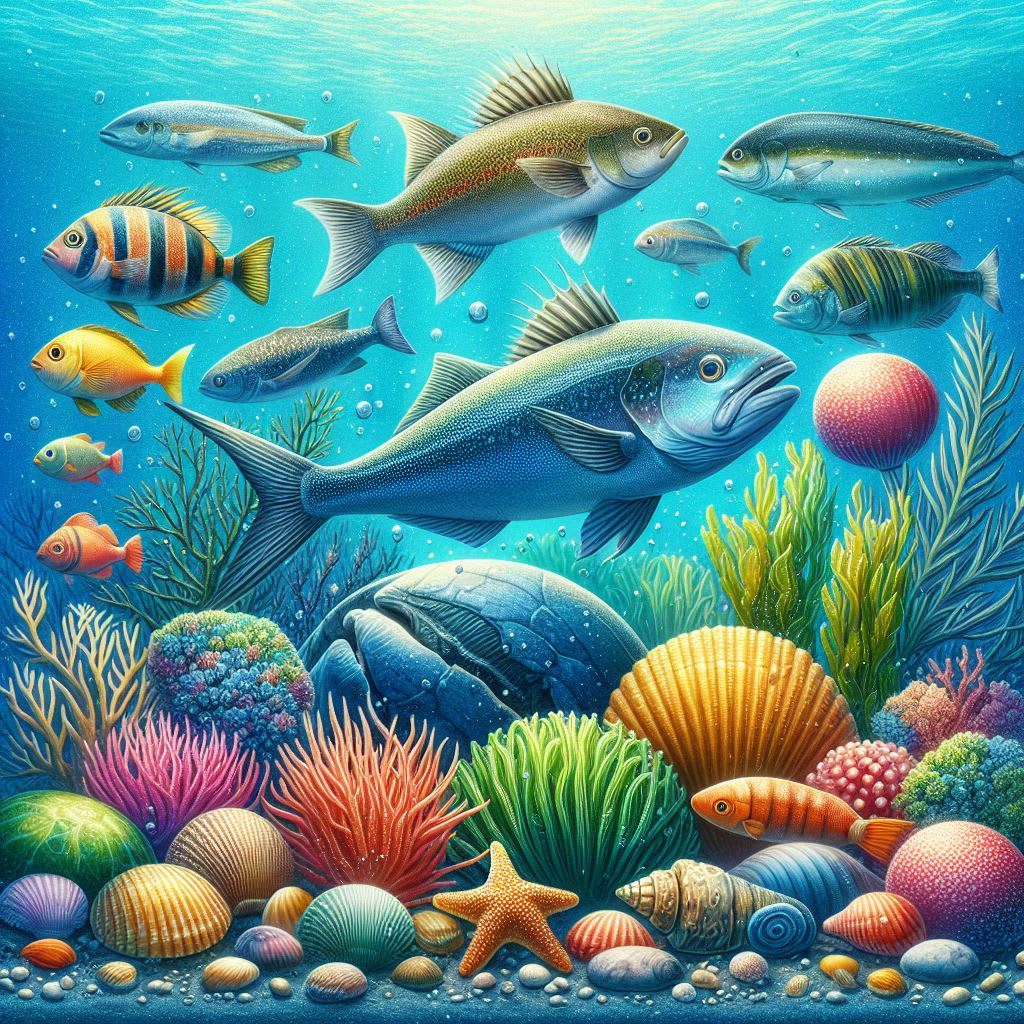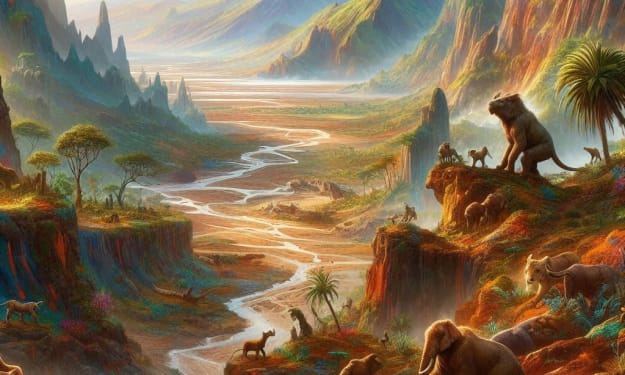Hidden Depths, Hidden Potential: Unveiling the Power of Aquatic Foods in a Changing World
Beyond Fish: The Future of Food

Hidden Depths, Hidden Potential: Unveiling the Power of Aquatic Foods in a Changing World
Imagine a future where glistening kelp forests sway beneath the surface, teeming with life. Picture vibrant coral reefs teeming with fish, not just a captivating spectacle, but a vital source of nutritious food for a growing global population. This isn't just a utopian dream; it's a very real possibility thanks to the often-overlooked potential of aquatic foods.
For decades, conversations about food security have largely focused on land-based agriculture. But our oceans, cradles of incredible biodiversity, hold a treasure trove of potential solutions to the complex challenges of feeding a planet facing climate change, population growth, and resource scarcity. This is where the concept of "blue food" comes in.
The Blue Food Assessment: Charting a New Course
The Blue Food Assessment, a groundbreaking collaboration between leading research institutions like the Stockholm Resilience Centre and Stanford University, is shedding light on the immense contribution aquatic foods can make to a more sustainable and equitable future.
This comprehensive project, involving over 100 researchers, delves into the potential of aquatic resources like finfish, shellfish, seaweed, and even microalgae to nourish a growing population while protecting the health of our oceans.
A Nutritional Powerhouse: The Benefits of Aquatic Foods
Aquatic foods are a powerhouse of essential nutrients. They are a rich source of complete protein, healthy fats like omega-3 fatty acids, and essential vitamins and minerals like iodine, vitamin D, and selenium. These nutrients are crucial for maintaining good health, preventing chronic diseases like heart disease and dementia, and promoting cognitive development, especially in children.
For millions of people living in coastal communities, particularly in developing nations, fish and shellfish are a vital source of animal protein and micronutrients. These foods are often more accessible and affordable than land-based alternatives.
Beyond Nutrition: The Broader Benefits of Blue Foods
The benefits of aquatic foods extend far beyond nutrition. Sustainable fishing practices, coupled with responsible aquaculture (fish farming), can contribute to healthy ocean ecosystems. Shellfish like oysters and mussels act as natural water filters, removing pollutants and improving water quality. Additionally, seaweed farming offers a promising avenue for mitigating climate change by absorbing carbon dioxide from the atmosphere.
A Sea of Challenges: Navigating the Blue Frontier
Despite their immense potential, unlocking the full benefits of aquatic foods comes with its own set of challenges. Overfishing, habitat destruction through activities like bottom trawling, and pollution from land-based sources are major threats to ocean health and the sustainability of fish populations. Climate change also poses a significant threat, with rising water temperatures and ocean acidification disrupting delicate marine ecosystems.
However, these challenges are not insurmountable. By implementing stricter fishing regulations, promoting responsible aquaculture practices, and investing in innovative technologies, we can ensure the long-term health of our oceans and the continued availability of blue foods.
Riding the Wave of Innovation: Technological Advancements
The future of blue foods is brimming with innovation. Vertical fish farms, resembling skyscrapers built onshore or even offshore, are revolutionizing aquaculture by minimizing environmental impact and maximizing production efficiency. These closed-loop systems can significantly reduce reliance on wild fish for feed and minimize water pollution.
Another exciting development is the growing field of cellular agriculture, where scientists are developing lab-grown seafood products. These products are essentially muscle cells grown from fish in a controlled environment, offering a sustainable alternative to traditional seafood production without harming ocean ecosystems. Companies are already developing lab-grown shrimp, salmon, and even bluefin tuna, potentially offering consumers a familiar taste without the environmental impact.
Precision fermentation, a technique that utilizes microbes to produce specific proteins or fats, is another promising technology with applications in the blue food sector. Companies are exploring the production of fishmeal substitutes and other valuable ingredients using fermentation, potentially reducing reliance on wild fish for aquaculture feed and creating a more sustainable supply chain.
Case Studies: Success Stories from the Blue Frontier
The potential of blue foods isn't just theoretical. Real-world examples demonstrate the economic and environmental benefits of sustainable practices. In Vietnam, for instance, community-managed fisheries programs have empowered local communities to co-manage fish stocks, leading to increased fish populations and improved livelihoods for coastal communities.
Another inspiring example is the regenerative kelp farming movement. Kelp forests play a vital role in healthy ocean ecosystems, providing habitat for diverse marine life and absorbing carbon dioxide. Companies are now exploring the potential of cultivating kelp offshore to create a sustainable source of food and bioproducts while simultaneously restoring degraded kelp ecosystems.
A Call to Action: Embracing a Sustainable Future
The Blue Food Assessment is a clarion call to action. It urges policymakers, scientists, industry leaders, and consumers to work together to create a future where aquatic foods play a central role in global food security. This requires a multi-pronged approach:
- Sustainable Fishing Practices: Implementing stricter fishing quotas, enforcing regulations to prevent illegal fishing, and adopting gear that minimizes bycatch (unwanted animals caught in fishing nets) are crucial. Additionally, supporting initiatives like Marine Protected Areas (MPAs) that allow fish populations to recover and replenish naturally is essential.
- Responsible Aquaculture: Promoting aquaculture practices that minimize environmental impact, reduce reliance on wild fish populations for feed, and prioritize disease prevention are key. Encouraging the use of alternative, sustainable feed sources like plant-based proteins or insect meal can significantly reduce pressure on wild fish stocks.
- Consumer Awareness: Educating consumers about the importance of choosing sustainably sourced seafood and exploring alternative blue food options like seaweed or sustainably farmed shellfish can make a significant difference. Mobile apps and online resources can empower consumers to make informed choices about the seafood they purchase.
- Investment in Innovation: Supporting research and development of innovative technologies for sustainable fishing, aquaculture, and processing of blue foods is essential. Investing in vertical farming, cellular agriculture, and precision fermentation holds immense potential for creating a more sustainable and efficient blue food sector.
Conclusion
The ocean's hidden depths hold the key to a more sustainable and equitable future. By embracing the power of aquatic foods, navigating the challenges responsibly, and harnessing the potential of innovation, we can unlock a world where healthy oceans nourish healthy people for generations to come. The Blue Food Assessment provides a valuable roadmap for this journey, urging us to recognize the immense potential of our blue planet and take action to ensure its continued bounty. As we embark on this exciting journey, let us remember that the health of our oceans is intricately linked to our own. By embracing a future where blue foods thrive, we not only secure a sustainable food source, but also ensure a healthy planet for ourselves and generations to come.
About the Creator
suren arju
Hi there! I'm Suren, your startup guide. Entrepreneur, writer, dreamer - I share insights, tips & stories to fuel your startup journey. Ready to explore, learn & win together? Join me & let's redefine how we launch, learn & leap!
Enjoyed the story? Support the Creator.
Subscribe for free to receive all their stories in your feed. You could also pledge your support or give them a one-off tip, letting them know you appreciate their work.





Comments
There are no comments for this story
Be the first to respond and start the conversation.